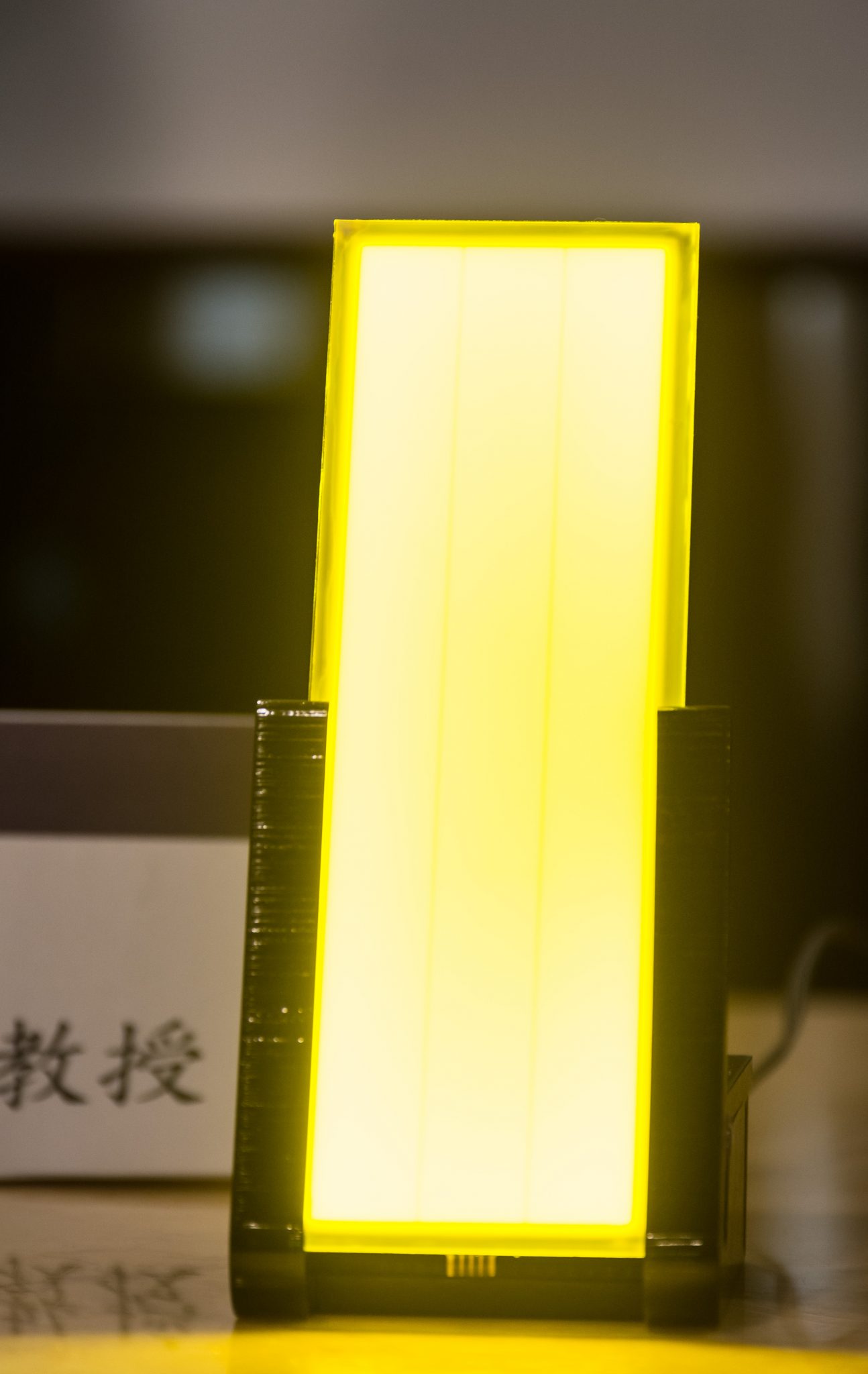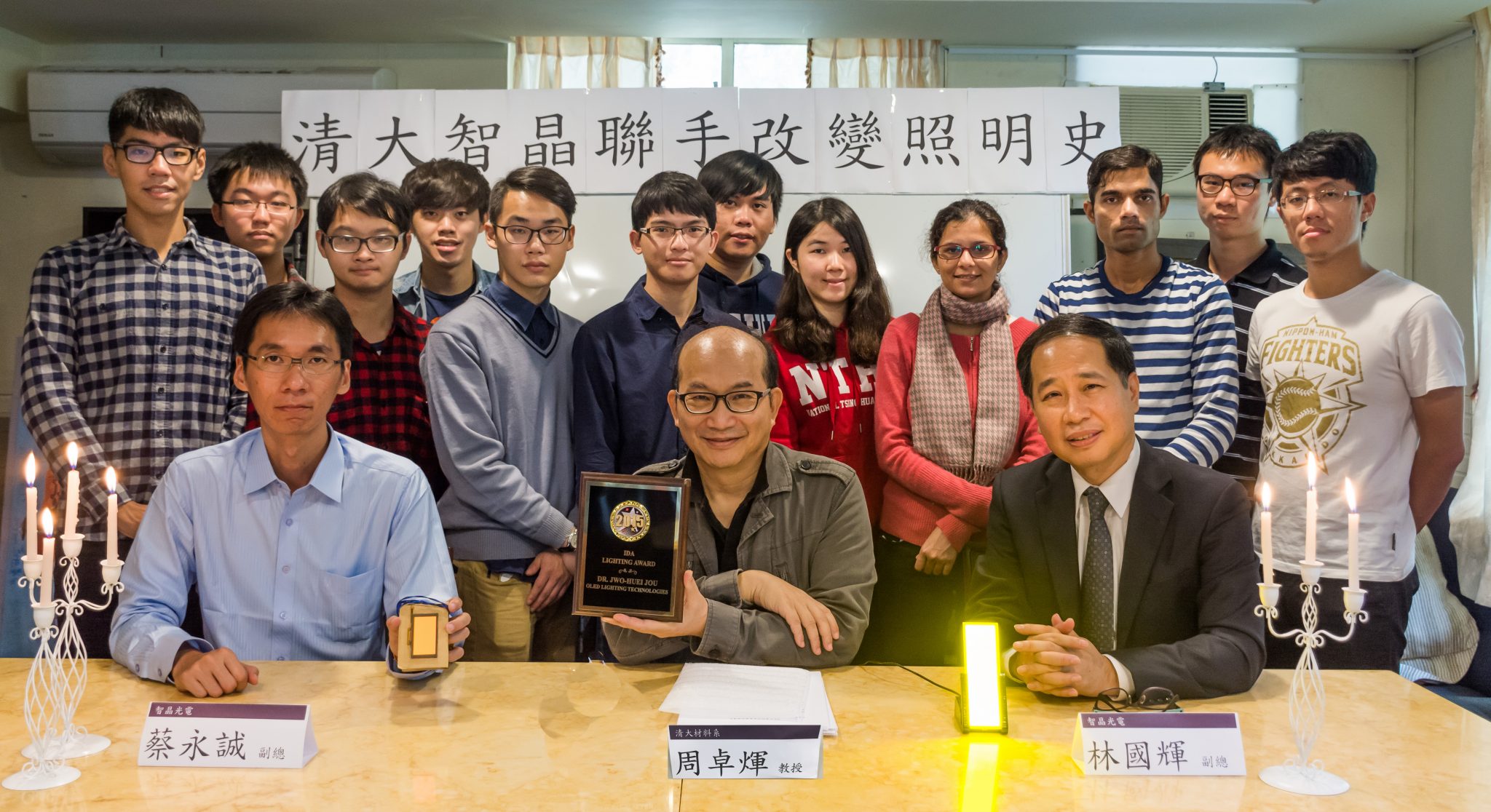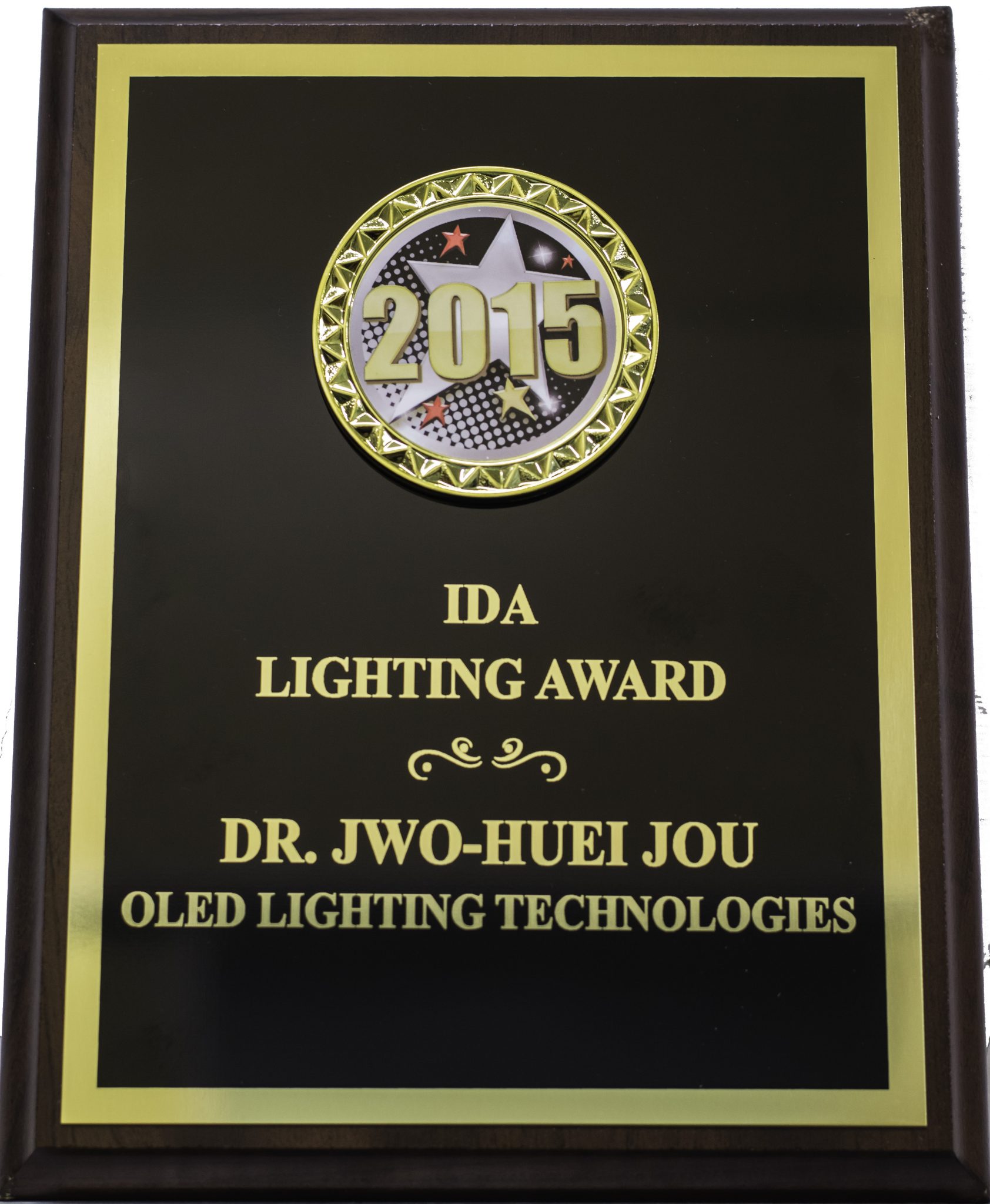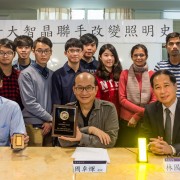NTHU is reshaping the lighting world via Candlelight OLED
Numerous researches have been sounding alarm with increasing frequency on the health hazards of blue light. They report that blue light possesses potential hazard to the retina of human eyes, circadian rhythm, melatonin secretion, and cancer risk.
To devise a human-friendly light source and to also trigger a “Lighting Renaissance”, the Prof. Jou’s OLED research group from National Tsing Hua University (NTHU), Taiwan, demonstrates a high light quality and blue-hazard free candlelight OLED, that serves as a good measure and a wisely choice for general lighting. Just before Christmas, the candlelight OLED has won the International Dark-Sky Association Lighting Design Award and Domestic golden lighting medal. Moreover, Taiwan’s government highlights and entirely promotes NTHU and WiseChip Semiconductor Inc. to further investigate candlelight OLED technology via the highest Ministry of Economic Affairs support in following two years. It’s surely confirmed that the health-friendly candlelight OLED can be commercialized, accessible and affordable for human mankind by the end of 2017.
Additionally, the IDA website announced that “Since 2006, Prof. Jou has worked with students on organic LED (OLED) lighting technologies in an effort to create lighting that minimizes negative impacts to human health. In this work, he and his research team has made numerous breakthroughs, such as the creation of very low color temperature OLED, sunlight-style OLED, pseudo-natural light OLED, and candlelight-style OLED devices. Their candlelight-style OLED has attracted a considerable attention from both academia and industries. Most importantly, the candle-like OLED has also been praised by medical experts and is considered one of the safest electricity-driven lighting sources. This lighting can be used in both indoor and outdoor applications.”
Upcoming lighting industrial trends should be psychological- and physiological- friendly lighting sources. Currently, the gross production value of OLED up to 4,000 billion US dollars.

Candlelight OLED, Source: NTHU

Professor Jou’s Research Team, Source: NTHU

IDA Received by Professor Jou’s Research Team, Source : NTHU



